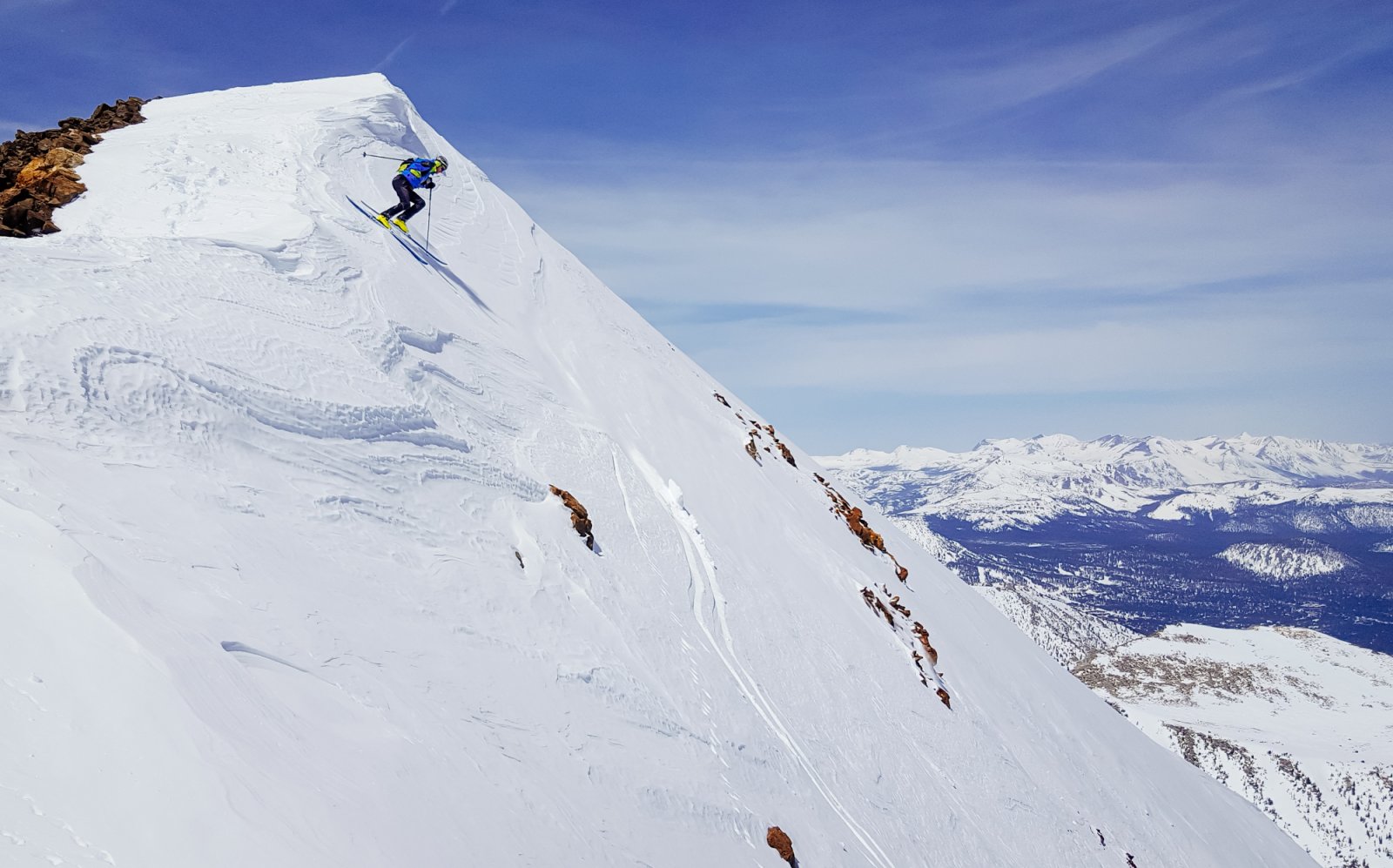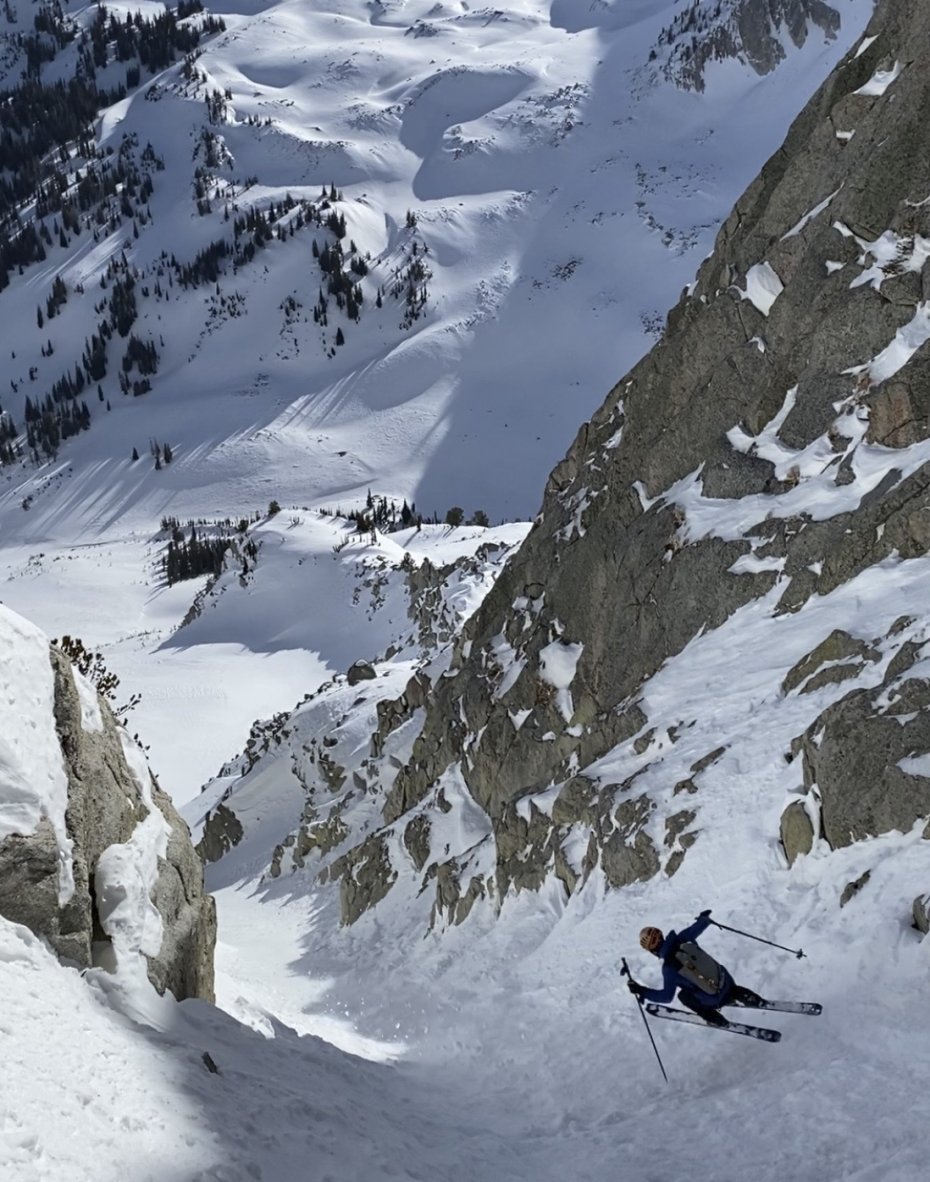3/11/2021 The Spring Skiing Quiver Slot

Come for the Powder, Stay for the Corn!
Most first-year tourers are lured into the backcountry by promises of endless untracked powder. After all, outside of the resort, there’s no tram dropping off hundreds of skiers at a time to turn last night’s dump into a mogul field. So with dreams of face shots and blissful turns, many folks dedicate their first touring set up to be a powder-slaying, wide-waisted beast - and we don’t blame them (within reason).
Come springtime, however, powder has been replaced by firm corn snow, and these same fresh-on-the-scene skiers are often surprised to find that other backcountry skiers are just getting their second wind of the season. The snowpack is stable, lines are filled in, the days are long, and perfectly ripe corn begs to be carved.
So perhaps a few seasons later, you, like so many others, have also come to realize that the best tours of the season regularly happen during this delightful springtime window of opportunity. You finally got to tick off those steep couloirs that are just too avalanche-prone midwinter. Or maybe the long, warm days allowed you to make care-free turns on smooth corn and swill celebratory beers at the sunny trailhead afterward. Whatever the reason, welcome to the good life.
But let us clue you in on something - it gets even better with a dedicated spring setup. Efficiency and reliability are the name of the game for this quiver slot as it allows you to go further faster, boost confidence on spicy lines, and make the most of corn season. Here’s why...
Dedicated Constructions
Yes, technically you can still use your powder skis in the spring but it should be noted that those skis are designed for just that - soft and forgiving snow with an emphasis on staying afloat. In other words, the exact opposite conditions of spring skiing. The flex pattern, stiffness, sidecut, amount of rocker, effective edge - everything - are all aimed to keep you smiling in midwinter conditions.
That all changes when the snow does.
Skis adept at skiing firm snow are going to emphasize maximum edge control. You really don’t want to be high up on a steep, exposed icy face and look down to discover that your skis are flopping around like fish and barely hanging on. You want those babies to bite into the snow!
This is usually accomplished by increasing stiffness and ensuring lots of effective edge contact. A big sidecut radius, 19m or higher, typically gets the job done on steep and firm snow. Pay attention to tip and tail widths since they can soak up some of the effective edge if they’re particularly wide.
Lose Some Lbs.
Coming from us, it shouldn’t be a surprise that weight loss is justification for a dedicated spring setup. Because there’s no need to keep afloat on hard snow, there’s no need for fat dimensions. And since there’s no need for fat dimensions, there’s no need to haul around extra ski and skin material that slows you down! If downhill ski racers don’t need float, why would anyone skiing corn? It’s also totally appropriate to go shorter than you normally would with your new spring ski because excessive rocker in the tip isn’t required. That newfound lightness will come in handy as you embrace long approaches to remote areas and throw the skis on your pack when cramponing.
Skinny for the Win(ny)
Putting your skis on a diet isn’t just a good idea for saving weight - skinny skis also initiate turns easier and are much more efficient edge-to-edge. A narrow-waisted ski performs MUCH better on a springtime skintrack because there is less unstable leverage on your edge. This equates to more edge control on the up and less blowing out. Skimo staffer Eric, says this fact gets reinforced every season as he watches his wide-waisted partners struggle to stay upright and in control on firm skintracks while he casually strolls by on his toothpicks. But in order to see that big difference, you need to commit. Going from 105 to 95 isn’t enough - we’re talking 85 or under. The difference in skinning efficiency alone will make the new setup worth it.

Skimo Staff Recommends
Putting together all of these requirements can be a bit intimidating. No worries, here are a few springtime notables from the Skimo Co staff.
Blizzard Zero G 85 - This is a classic ski, hungry for steep and firm conditions thanks to its torsional rigidity, carbon overlay, long-running effective edge length, and durable sidewall construction. As a result, this ski can reliably hold an edge when needed most.
Dynafit Blacklight Pro - The Blacklight Pro impressed us with its ability to be a fully-capable, powerful ski yet remain fun in diverse conditions. Oh, and it's just barely heavier than most skimo skis. Best of both worlds!
Movement Race Pro 85 - The Race Pro is the ultimate long-distance tool with a versatile shape at an insane weight. Now, there's no such thing as too far of an approach. However, for more general usage and increased longevity, look at the Alp Tracks version which shares the same shape as the Race Pro but with a beefier construction.
Ski Trab Maestro.2 - A mountaineering legend that will last a lifetime. The Maestro.2 features the renowned Ski Trab construction and durability which means it will handle whatever you and the mountains throw at it.
Voile Objective - As the name insinuates, the Objective is designed for making turns down those lines that have been on your tick list for far too long. It's great for a myriad of springtime conditions such as mashed potatoes, spring powder, slop, or just plain ol' corn ripping.
The Mountain Bike Can Wait
Hopefully, by this point, you’re chomping at the bit to make the most of the spring conditions and dreaming of faraway lines. However, if you’re still unsure of which ski to get, feel free to reach out to us with any questions. Better yet, swing by our shop and demo a few options. Chances are, by the time you return them, you’ll be convinced that your springtime quiver slot needs to be filled ASAP. Regardless of which way you go, don’t forget to pack the sunscreen.
Comments
Looking at the Dynafit Blacklight Pro vs Black Diamond Cirque, for Centrail ID mountains - Sawtooths, Pioneers, etc. What are your thoughts on each? I am 6ft 185lbs, should i go 171 (seems short!) or 178. I am currently on the 185 BD Helio 105 as my touring ski. Thanks!
And then of course, there is lovely breakable crust, and slop down low to be found on many spring days as well.
What are your thoughts for a versatile spring ski’? Somehting to handle any and all conditions you might encounter in spring? As opposed to these dedicated ‘firm snow’ tools?

3/31/2021
Stop the Glop!














